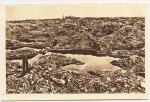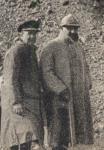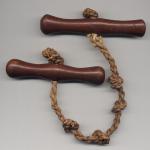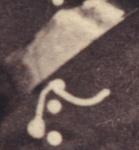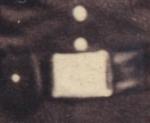-
Posts
388 -
Joined
-
Last visited
Content Type
Profiles
Forums
Blogs
Gallery
Events
Store
Everything posted by Eduardo
-
-
-
The next four postcards are of the city of Verdun after the long battle that lasted almost the whole year 1916. These cards were printed by Phototypie Baudiner of Paris.
-
The fort of La Pompelle was built after the 1870 war to protect the city of Reims. Non the less at the beguiing of the freat war the fort was unarmed. La Pompelle was capture by the Germans without fighting en the 4th september 1914 but was reconquest twenty days later by the 138e Regiment d'infanterie. The F?d?ration Nationale Andr? Maginot, purchased the fort and gave it to the city of Reims in 1968. The fort of La Pompelle is now a musseum. This postcard shows how was it left anter years of combat. Eduardo
-
Hello Kevin in Deva, Good job with the colors of the postcards. Thanks. The expresion in french means "The last drink on the stirrup" before turning back. There is a similar expresion in Spanish which means "just a last drink before you leave". The Guillaume (William) mentioned could be a generic one meaning his troops and not the Kaiser himself. In any case I wonder who could those officers be. Eduardo
-
Hello Kevin in Deva, Thanks for the picture. Besides the cars I can see there have not been many changes in the place. I hope next time in Europe I can go and visit many of the sites- Eduardo PS. What do you make up of Williams last drink? One of the previous cards(post 123)
-
Finally a view of the place where the village and pond of Vaux were before the intense German atack of the town and forts. Eduardo
-
This view of a window of the fort of Vaux was made much later. The sighn gives some historic details.
-
After several days of fighting from the 2 to the 6 of June 1916 and no more water to drink, the brave Commandat Reynal had to raise the white flag and surrender the fort of Vaux, near Verdun.. His sword was given back to him by the Crown Prince and he received postumous high honors for his heroic defence. Here I post 3 views fo Vaux the first one is the fortifications, the second a detail of the forts after the war and the third a view of the village and pond of Vaux totally destroyed.
-
The following are two postcards published by J. Courcier of Paris. and send by Eugene Bonin to his sons. One dated 29 mai 1918 is addressed to "Mon chere petit Fanfan" and the second one dated 5 juin 1918 to "Mon chere petit Toto". E Bonin was in the 48th Batallion, 5th. Cie. as stated in the cards. The delicate colors used to paint the cards make them even more interesting (maybe they have just faded) I would apreciate iny information on the second one "Devant Arras. Le dernier coup de l'etrier de Guillaume avant de faire demi tour" Will this Guillaume be Kaiser Wilhelm in the car having his last drink before turning back?. Eduardo
-
Hello Kevin in Deva. Thanks for your words. I will post a few new ones during the week end. Eduardo
-
-
-
After over a nth, here I include three more postcards. These are of the Belgian port of Zeebrugge. The first one shows the British criser Thetis sunk and obstructing the entrance chanel. Eduado
-

Soldiers by a mill
Eduardo replied to Eduardo's topic in Germany: Imperial Uniforms, Headwear, Insignia & Personal Equipment
Thank you Chip and Chris for the information. I will add it to my files. The setting with the mill in the back is wonderefull. Eduardo -
-
In one of my postcards (N?854) of the collection British "Advance on the Somme" A group of American Journalists are shown in front of the castle in Ham. Wonder if they can be identify and if thre is any more information about this men of the press in such a demanding situation. Eduardo
-

Early handcuffs
Eduardo replied to Eduardo's topic in Great Britain: Mervyn Mitton's British & Colonial Police Forces
Yes Dave and thank you. As I said we used it a few times to play arround and when you twist the handles the knots go in between your wrist bones and can realy hurt. I guess they were used during late XIX and early XX century but don't realy know. Eduardo -

Early handcuffs
Eduardo replied to Eduardo's topic in Great Britain: Mervyn Mitton's British & Colonial Police Forces
Thanks Dave for your answer. Our last Inca, "Atahualpa" was killed by the men of Francisco Pizarro using garrote. It sounds horrible. None the less I think this piece could not have been for garrote because it is too short. It can go arround the wrist at the most. When my brother and myself were young we tried it a few times and really hurts. Eduardo -
Although they are not part of the British nor commonwealth police, I could not find a better place in the forum to ask about these early handcuffs. They were given to me in Belgium in 1958 as "old hancuffs" and I have had them since the age of 12. I guess that this kind of equipment must have been common to several police forces so wonder if someone could help me with information as to the probable date of use. Eduardo
-
Thank you Michael, It does not help identifying the ship but it places the card in the WWI and the link is very interesting. Will send them the scan of my card. Maybe in the meanwhile they have advance the identifications. Eduardo
-
Hello Hunyadi, Thanks for your opinion. Unfortunatelly there is nothing in the back. Do you have any idea of the meaning of the initials? Eduardo
-
A ship in ruff waters makes a wonderfull photograph. In the botom there are two sets of letters ARA to the left and AC-5 to the right. Could someone tell me what they mean. The picture is suposed to have been taken during World War I. Is it possble to confirm this?
-

An elegant uniform in Liverpool
Eduardo replied to Eduardo's topic in Great Britain: Militaria: Badges, Uniforms & Equipment
Graham, What a wonderfull link. I am going to mark it in my favourites. Eduardo -

An elegant uniform in Liverpool
Eduardo replied to Eduardo's topic in Great Britain: Militaria: Badges, Uniforms & Equipment
OK Graham, Here they go. I really find them blury but you, stuart and other members of the forum will decide. Eduardo







